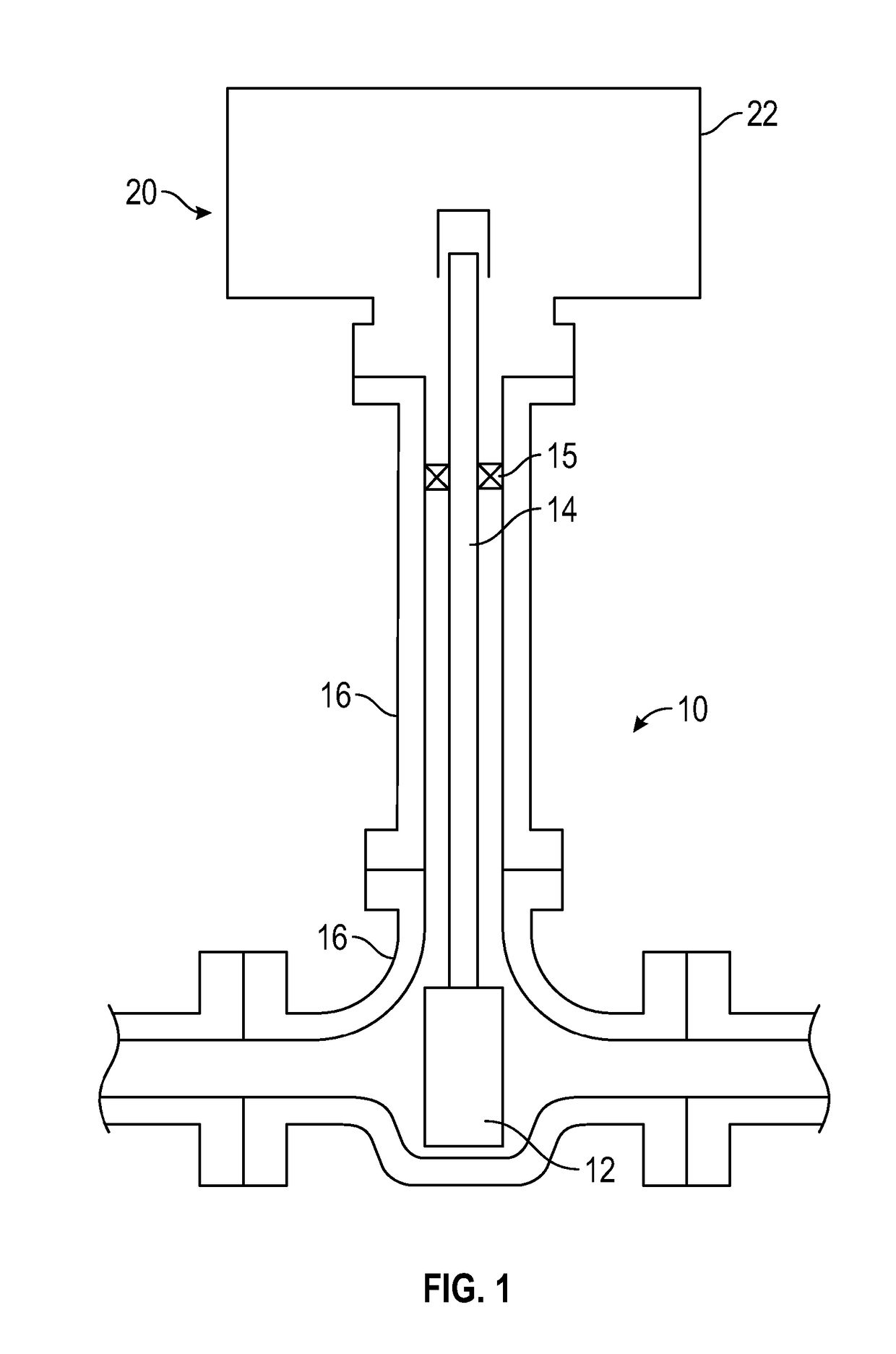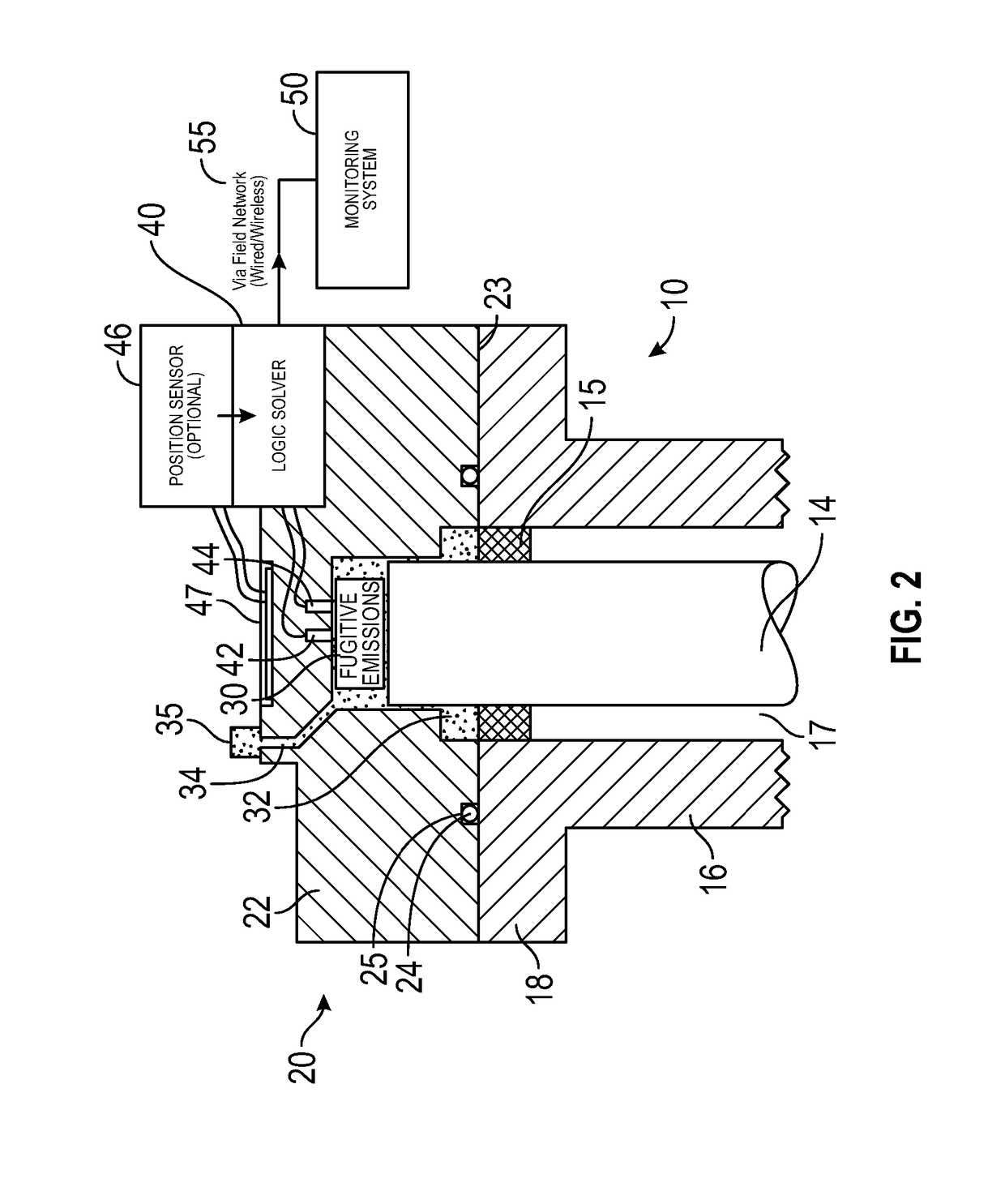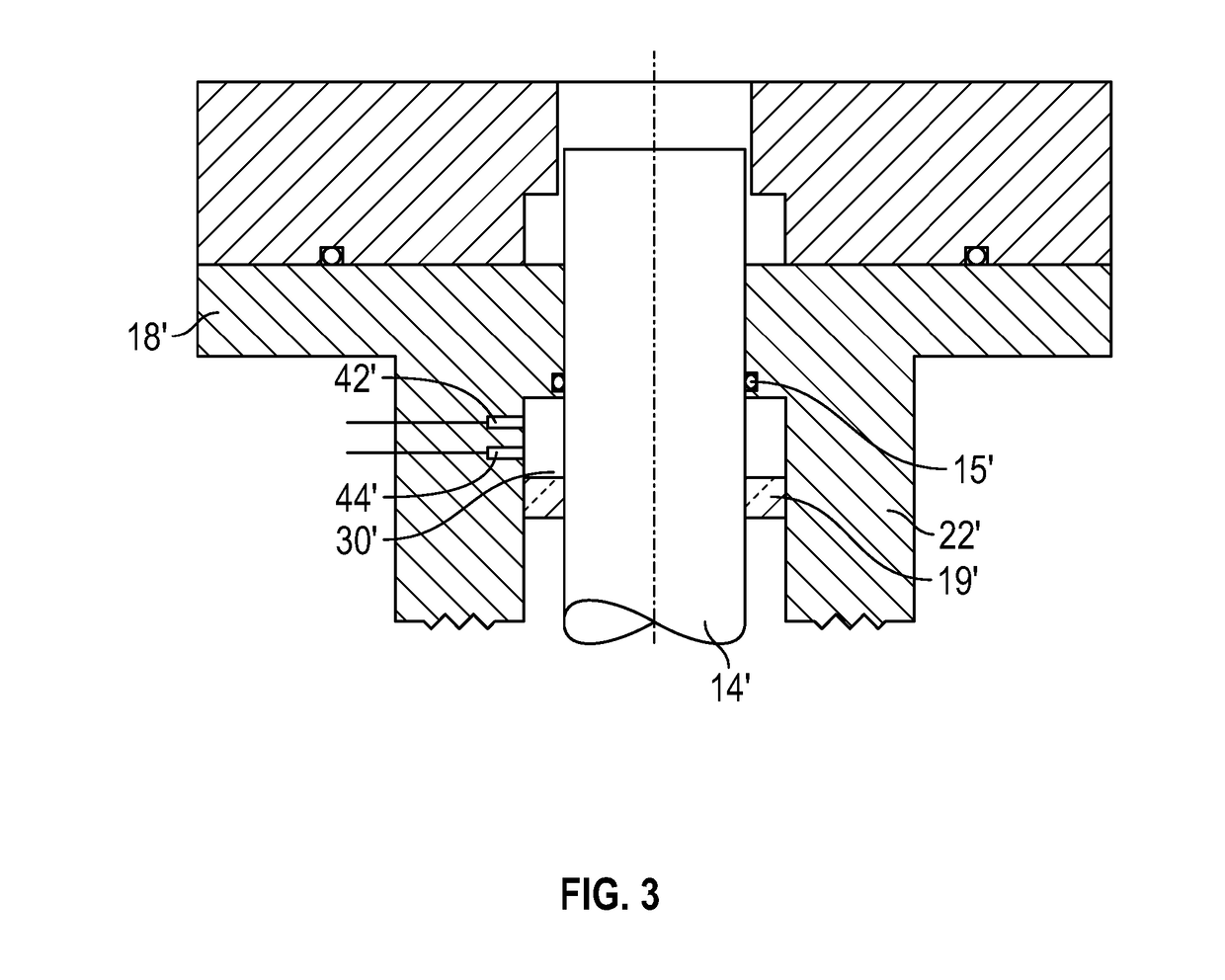Fugitive emission detection
a technology of emission detection and fugitiveness, applied in the direction of instruments, fluid-tightness measurement, measurement of fluid loss/gain rate, etc., can solve the problems of increased maintenance costs, loss of profit/revenue, and inability to eliminate all leakage risks, etc., to achieve more regular maintenance and inspection, high reliability, and less reliability
- Summary
- Abstract
- Description
- Claims
- Application Information
AI Technical Summary
Benefits of technology
Problems solved by technology
Method used
Image
Examples
Embodiment Construction
[0104]FIG. 1 shows a typical industrial valve assembly 10 which may be used to control the flow of fluids in industrial applications. For example, the valve assembly 10 could be used oil and gas, water and waste water, power, marine, mining, food, pharmaceutical and chemical industries. The valve assembly comprises a valve 10 including a valve member 12, connected to a valve actuation stem 14. The valve could for example be a quarter turn valve or a multi-turn valve arrangement.
[0105]The valve member 12 and stem 14 are provided within a housing 16. The upper portion of the housing 16 comprises a valve stem passage 17 and terminates at a flange 18. At least one stem seal 15 is provided between the stem passage 17 and stem 14 and is intended to prevent the escape of fluid from the valve housing 16 in use. As the stem seal 15 is a non-static seal (as the stem 14 will generally rotate relative to the passage 17 during actuation) it provides a less reliable seal than static seals (for ex...
PUM
 Login to View More
Login to View More Abstract
Description
Claims
Application Information
 Login to View More
Login to View More - R&D
- Intellectual Property
- Life Sciences
- Materials
- Tech Scout
- Unparalleled Data Quality
- Higher Quality Content
- 60% Fewer Hallucinations
Browse by: Latest US Patents, China's latest patents, Technical Efficacy Thesaurus, Application Domain, Technology Topic, Popular Technical Reports.
© 2025 PatSnap. All rights reserved.Legal|Privacy policy|Modern Slavery Act Transparency Statement|Sitemap|About US| Contact US: help@patsnap.com



